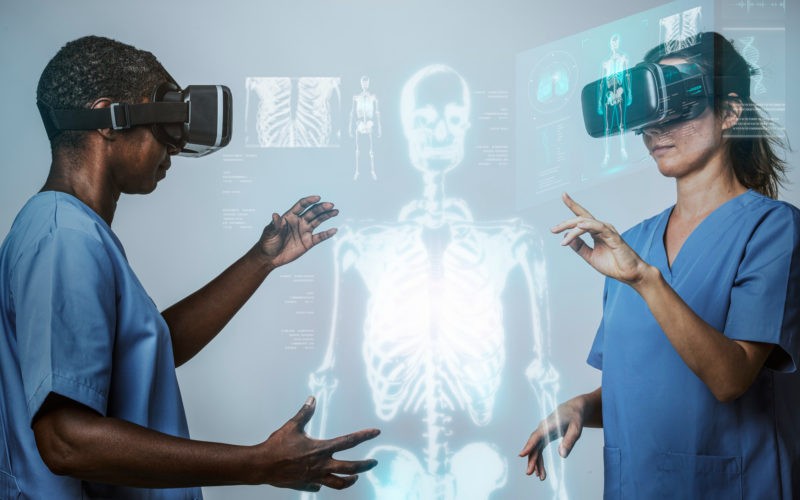The pandemic accelerated a significant shift towards remote healthcare operations. With telehealth and digital tools now central, providers must optimize practices for this new normal. Advanced technologies can transform remote care delivery, engage patients, protect data, and enhance productivity. This article explores practical approaches to enhance virtual healthcare through technology.
Embracing Digital Healthcare Technologies
The pandemic necessitated the rapid adoption of telehealth services and digital patient engagement platforms. These technologies expanded healthcare access while minimizing in-person contact. Telehealth utilization increased by over 4,000% in 2020, enabling safe care delivery.
Remote patient monitoring devices like blood pressure cuffs and glucose monitors track vitals between visits. Chatbots efficiently handle patient questions and triage needs. User-friendly patient portals centralize appointment booking, and prescription management, and provide access to records.
By seamlessly integrating these technologies, providers can remotely deliver quality care. Features like e-prescribing, intuitive EHR interfaces, automated workflows, and virtual communication optimize efficiency. Most importantly, digital health technologies significantly improve patient outcomes and satisfaction.
Surveys show patients value telehealth for reduced wait times, flexibility, and continued pandemic care access. Over 80% expressed satisfaction with telehealth visits and openness to continuing virtual access.
In summary, telehealth and digital platforms expand care access while improving convenience, outcomes, and the patient experience.
Security and Compliance in Remote Healthcare
Advancing remote healthcare also introduces risks related to data security and compliance. Healthcare cyber attacks increased by 125% during the pandemic as virtual access grew (IBM). Healthcare practice management software allows remote teams to coordinate tasks securely, access real-time patient data, and ensure smooth information flow.
Providers must implement robust protocols to safeguard protected health information. Measures include encrypted VPNs, multifactor authentication, routine software updates, and strict access controls. Education around remote security best practices is key. Patient consent and transparency build trust.
Making data protection a priority ensures secure remote care delivery. Telehealth growth requires protocols and policies to mitigate data security risks.
Enhancing Patient Experience with User-Friendly Tech
Optimizing remote healthcare also requires ensuring technologies are user-friendly for patients. With expanded choices, patients are more likely to use and recommend providers with simple, satisfying digital experiences.

Intuitive EHR interfaces, telehealth platforms, and patient portal usage that reduce effort and offer transparent navigation improve experiences. Features like customized reports, simplified prescription management, and centralized health records access are demanded.
Surveys show that 92% of patients want easy online access to health data, indicating a strong demand for user-friendly technologies that minimize steps. By prioritizing usability and convenience, providers enhance patient engagement.
In summary, optimizing patient-facing technologies for simplicity and ease of use improves digital experience and loyalty.
The Power of Intuitive Reporting and Automation
Streamlining remote healthcare workflows means embracing intuitive reporting and automation. EHR and practice management platforms with customizable reporting provide data-driven insights to improve decisions.
Automating administrative tasks like appointment reminders, patient outreach and documentation via AI chatbots cuts administrative workload by 30%. Rules-based claim processing speeds up reimbursements by up to 40%. Automated workflows reduce manual work, thus increasing productivity and reducing mistakes. This lets staff focus on personalized care.
Thoughtfully implementing automation enhances productivity and patient experience. This frees up resources to be redirected towards improving care quality and satisfaction.
Benefits of Remote Work in Healthcare
Contrary to initial skepticism, remote healthcare delivery offers many benefits. Virtual appointments prevent delays in care access. Reduced commute times improve work-life balance for clinicians.
According to Harmony Solutions, 80% of healthcare leaders will continue virtual or hybrid work models post-pandemic. Additionally, up to 83% of healthcare workers report higher productivity in remote settings. The pandemic paved the way for larger remote operations in healthcare. Studies show profound benefits:
- 34% higher productivity in remote healthcare workers owing to fewer interruptions and distractions.
- 30% less provider burnout since remote work allows better work-life balance and flexibility. This improves retention too.
- 41% improvement in hospital finances via cost savings from telecommuting policies – on real estate, operations, and environmental resources.
- Safer care delivery as telehealth reduces the risk of disease transmission to vulnerable populations.
- Increased access to care through telehealth in underserved communities lacking sufficient providers.
- Lower absenteeism with less burnout and greater schedule flexibility to manage personal responsibilities.
- Sustainability dividends from reduced carbon footprint by eliminating daily commutes.
The data makes a compelling case for continued remote operations, even post-pandemic. While the transition is complex, the effort pays rich dividends for health systems in efficiency, costs, sustainability, care quality, and workforce stability.
Key Takeaways
Telehealth, digital engagement tools, and remote monitoring expand access and improve outcomes. However, protecting data with cybersecurity and ensuring compliance is critical for remote care. An intuitive, user-friendly tech experience also boosts patient satisfaction and usage.
Automation and advanced reporting drive efficiency in virtual care operations. Remote work unlocks benefits like increased access, productivity, and work-life balance. With long-term remote care delivery ahead, investing in purpose-built technologies will be vital to optimize virtual care and meet patient needs.
Conclusion
In essence, advanced healthcare technologies are pivotal in enabling smooth remote operations. Their optimal use hinges on a fine balance of security, usability, and intelligent automation. While an initial investment, their long-term dividends are undeniable. This digital transformation will shape the imminent future of modern healthcare.
FAQs
What are the key benefits of digital technology in remote healthcare operations?
Digital health technologies improve remote care access, quality, and productivity through automation. Telehealth, remote monitoring, EHR systems, and patient engagement platforms overcome geographic barriers. User-friendly design also enhances the patient experience.
How do healthcare providers ensure security and compliance in remote work?
Data protection strategies are essential — multifactor authentication, encryption, routine software updates, access controls, and cybersecurity training. Providers must comply with HIPAA, HITECH, and other regulations when handling protected health information remotely. Ongoing risk assessments and audits maintain compliance.
What role does patient satisfaction play in digital healthcare?
Positive patient experience is crucial for digital health tool adoption. Convenient features like telehealth, prescription portals, intuitive EHRs, and transparent data policies drive satisfaction, usage, and loyalty.
Optimizing remote operations through purpose-built technologies focused on engagement, productivity, and security is vital for healthcare’s future. This enables secure, empathetic, and effective virtual care delivery.












